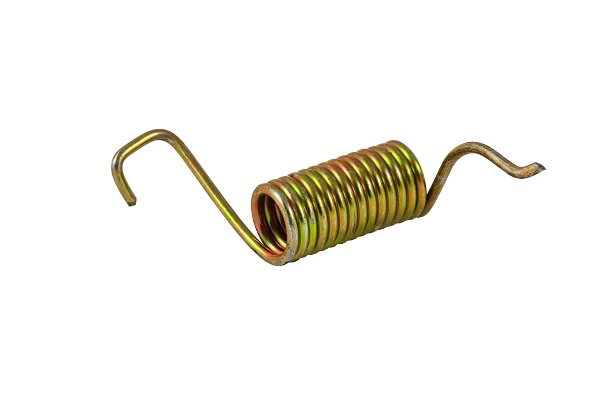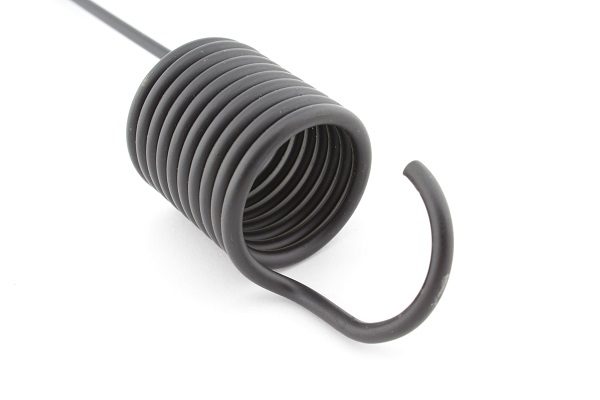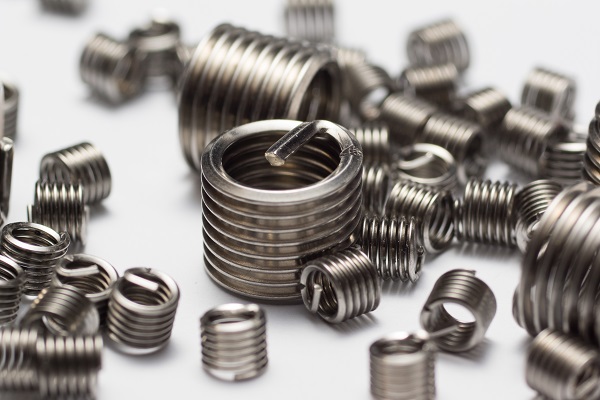Wide Variety of Standard & Custom Torsion Springs
Torsion springs are helical springs that exert a rotary force. The ends of a these springs are connected to other components. As the components start to rotate around the center of the spring, the torsion spring exerts an equal force to push them back to their initial position. These springs are subjected to bending stress instead of torsional stress, and are capable of storing and releasing angular energy. They can hold a mechanism in place statically by deflecting the legs by the center-line axis of its body. SMSC provides regular custom torsion springs, as well as heavy duty torsion springs to suit your design requirements.
Specifications:
Following are the specifications of torsion springs:
| Length of Legs | up to 24 in | up to 609.6 mm |
| Wire Size | .010 to .375 in | .254 to 9.525 mm |
| Direction of Winding | Right Hand | Left Hand |
| Material | Beryllium Copper | Music Wire |
| Inconel | Chrome Silicon | |
| Chromium Vanadium | Phosphor Bronze | |
| Stainless Steel 302 | Stainless Steel 304 | |
| Stainless Steel 316 | ||
| Finish | Plain | Black Oxide |
| Painted | Cadmium | |
| Passivate | Zinc Gold | |
| Zinc Silver | ||
Parameters:
Here are some of the parameters of torsion springs:
- Outer Diameter: The outer diameter of the spring is specified when it is required to fit into a circular hole with enough exterior clearance for operating freely. It is also specified in case of any outer housing clearance issues.
- Inner Diameter: The inner diameter of the spring is specified if the spring is required to slip over a mandrel with necessary clearance for operating freely.
- Spring Length: The spring length is the length of a spring coil.
- Wire Diameter: Wire diameter is the diameter of a spring wire.
Performance factors:
- Spring Rate: Spring rate is the angular return torque provided per unit of angular displacement.
- Maximum Deflection: Maximum deflection is the maximum rated angular deflection of spring before damage.
- Wind Specifications: The wind of the spring can be right hand, left hand, or double torsion.
- Left Hand Wind: Wound in a left-hand configuration.
- Right Hand Wind: Wound in a right-hand configuration.
- Double Torsion Wind: It refers to one left hand and one right hand wind on the same spring, typically with the unwound section in between the winds. The two legs of the spring are on the same side.
Configurations
Our helical torsion springs are designed for rotary actuation. These springs provide an angular return force too. These springs are offered in various leg configurations, which enable their attachment in different ways. The leg specifications to consider for torsion springs include leg end style, leg angle, and equal leg length.
Helical torsion springs that are parallel or straight on the same side have 0° leg angle, and their angle increases in the direction of unwinding. Some of the leading leg end styles include the following:
- Straight Torsion
- Straight Offset
- Hinged
- Short Hook Ends
Torsion springs can be hooked, bent, twisted, and looped to meet your application requirements. We provide torsion springs in a choice of 360°, 300°, 270°, 210°, 180°, 120°, 90°, and free leg position.
Benefits of Torsion Springs:
Some of the major benefits of these springs are as follows:
- Durable
- Easy to adjust
- Relatively small
- Great automatic levelling
Applications:
These types of springs are commonly used in:
- Clothes pins
- Clipboards
- Swing-down tailgates
- Garage doors
- Hinges
- Counterbalances
- Lever return applications
At SMSC, we make sure to fulfill our clients’ industrial requirements on time. We provide competitive price benefits on all our products. To know more about our standard and custom torsion springs or other industrial springs in our selection, please contact us on our toll- free number 800-330-2460, or send us an email at smsc@windstream.net. Alternatively, you can Request a Quote to know more.
Related Blog Post:
- Torsion Springs – Left Wind or Right Wind? Is that All?
- 5 Major Applications of Torsion Springs
- 4 Tips for Selecting Torsion Springs for Garage Doors
- Why Customers Choose Torsion Springs for Industrial Applications
- Understanding the Function of Torsion Springs on Garage Doors




 Upload Your CAD Drawing
Upload Your CAD Drawing